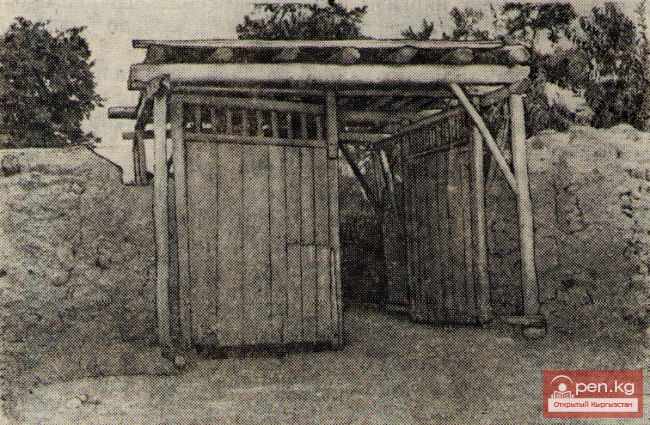
Daraut-Kurgan Fortress is located in the village of the same name on the left bank of the Kyzyl-Suu River. The first information about this fortress was provided by A. P. Fedchenko, who visited it in the 1970s during his travels in Turkestan. A. P. Fedchenko paid a courtesy visit to the commander of Daraut-Kurgan Fortress, Ismail-Toksoba (toksoba is one of the lower feudal ranks in the administrative hierarchy of the Kokand Khanate). Ismail-Toksoba was appointed commander in 1870, when the ruler in neighboring Karategin renounced vassal dependence on the Kokand Khanate and declared independence. From that time, in the event of a rebellion, the Alai Kyrgyz had the opportunity to find refuge in Karategin. At the same time, the toksoba was tasked with expanding and strengthening Daraut, which took on its modern shape. It was a quadrilateral surrounded by clay walls up to 2 fathoms high, with one gate on the northern side. The previous korhon was entirely within the new constructions and served as a home for Ismail and his family—children and wives.
Inside the fortress, there were sheds that provided shelter for people and served as elevated support for shooting in case of an attack. The spacious courtyard was intended for horses. Here, it seems, livestock was also kept, and yurts were set up.
The garrison consisted of 50-60 horsemen with rifles and sabers, all from the local Kyrgyz population. The garrison was not maintained permanently but was gathered only when necessary; at other times, the dzhigits lived in their homes. The fortress was built in the first half of the 19th century. An inspection of the fortress by our expedition in the summer of 1984 showed that this rectangular fortification now measures 76 X 43 m, with a height of the fortress walls of 4 m. At the corners, the fortress is flanked by powerful towers with a diameter of 3 m, a height of 5 m, and a wall thickness at the base of 1 m. In the upper part of the walls and towers, at a height of approximately 2-2.5 m, there is a row of loopholes for rifle fire. The gates are located in the center of the northern wall. Outside, the fortress was surrounded by a small moat. Since the 1940s, it has been used as storage facilities. It was partially destroyed during an earthquake but was subsequently restored, except for two corner towers.
The fortress can certainly be classified as a historical monument that requires protection.















































